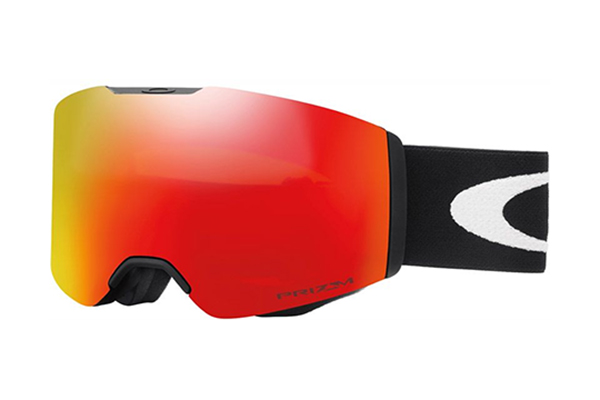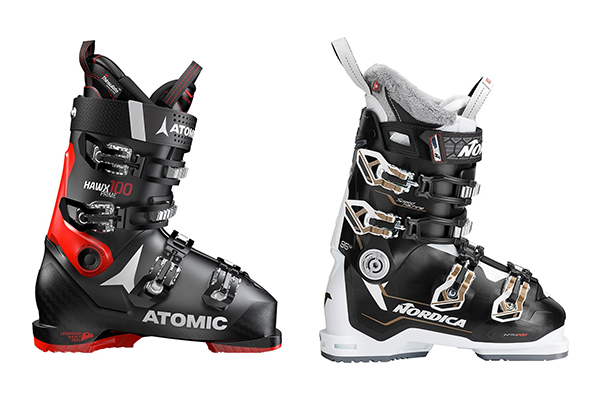What Do I Need For Skiing
Whatever your age, athletic ability or budget, skiing is a great activity to take up that is now more accessible than ever. You get to enjoy amazing mountain scenery, immerse yourself in a foreign culture, try new food and drink and get a great work out at the same time.
Skiing is a sport that exposes you to cold mountain environments that are susceptible to fast changing weather. With this in mind, you want to wear clothing that keeps you warm without overheating, allows you to move freely and protects you from snowstorms and the wind.
Along with the variable weather you'll find that ski resorts have mixed terrain and conditions that mean you're probably going to fall over at some point - whatever your ability. It’s important be prepared for this and protect yourself with a helmet and other safety equipment.
In terms of skis and ski boots, most people start by renting these, to see if they enjoy skiing, before deciding to buy their own. Having your own custom fitted ski boots makes an amazing difference to the level of comfort, control and enjoyment you have when skiing. Owning your own skis further improves the level of performance you experience and most-definitely aids your progression.
These pants provide warmth and comfort, sitting under your ski pants. They are made from synthetic or natural (wool) fabrics that trap air between the fibres while wicking away moisture to keep you dry and warm.
Merino wool is a great insulating fabric as it is effective at wicking and efficient at warmth; it's also naturally odour free so you can get away with wearing the same pair for longer.
Base layer tops work the same way as baselayer pants, trapping air between the fibres while letting excess heat and moisture escape. A top with a high zip neck and sleeve thumb loops offers extra protection on colder days with ventilation on hotter ones.
A fleece jacket acts as a midlayer, sitting between your base layer and outer jacket. It holds a layer of air between it and your baselayer improving insulation. The jackets themselves are often made from a stretchy and relatively thin material for unrestricted movement and breathability.
Another benefit of this style of midlayer is that the low-profile hood can fit under a helmet improving warmth on those bitterly cold days.
There are two main styles of ski jackets: ones that have insulation and those that a don't (shell jacket). They both have their advantages and disadvantages - it is a personal choice of which you prefer.
An insulated jacket, generally, removes the need for a midlayer or fleece, keeping you warm and dry; however, if it is late in the ski season (March or April) you may be a ittle bit warm.
A shell jacket protects you from the wind, snow and is highly breathable, alhtough it does not add much warmth, requiring you to wear a midlayer. If you become too hot you can take it off and easily pack it into a backpack.
Ski pants sit over your base layer pants protecting you from snow and wind. A breathable pair that has articulated joints or loose fit is going to continue your layering system and not restrict your movement.
A thin yet warm beanie and neck scarf are going to protect your face from cold winds, especially when on a chair lift or at the top of a mountain. The soft fabrics sit comfortably next your face while easily fitting under a helmet, jacket and goggles. And when not in use they easily pack away into a jacket pocket.
A good glove or mitt should keep your hands warm and protect them from snow and wind while providing you with enough grip to hold your poles and dexterity to adjust equipment.
If you suffer with poor circulation or are suceptible to the cold, mittens provide you with more warmth than a glove although you do sacrfice some movement.
For more infomation take a look at our glove buying guide.
Skiing puts a lot of pressure and stress on your feet and lower legs so having warm & comfortable socks is a must. Socks that can wick away moisture are going to keep your feet dry, warm & prevent blisters. Any socks that have merino in them are going do this and have the added bonus of minimising odours.
Other features to look out for in a sock that will make your skiing more comfortable are a flat seam toe box (avoids rubbing), cushioned high impact areas (heels, shins and toes) and some elastane or support that holds the sock in position.
Ski helmets are an integral part of any skiing outfit - minimising the damage to your head in the event of crash
In recent year's the design and materials involved in helmet construction have advanced greatly making them safer, lighter and more comfortable.
Take a look at our ski helmet buying guide for more information.
There are several factors that help to determine which skis are right for you:
Ability: A ski that suits your ability and experience is going to help you progress and get the most from your time on the snow
Look out for our Ability Chart Indicators on our skis to match up your ability to the correct ski.
Terrain:
To get the best performance from your skis it’s important to choose a model designed to work in specific conditions and environments you intent ski in.
Are skis are group into 5 categories: Freeski, Backcountry, Freeride, Freestyle, All Mountain and Piste.
Sizing:
The appropriate size of ski depends on a combination of factors such as weight, ability, ski flex shape, and intend use. Our online customer service team or in-store staff will be happy to guide you through this decision.
Take a look at our ski buying guide for more information.
Ski poles are normally made from aluminium or carbon to help keep the weight down and come in a range of lengths to suit all heights. They improve your balance, enable you to push on flats and performing technical turns.
For more information take a look at our ski pole buying guide.
In the mounains, conditions can vary greatly, from bright and sunnny to heavy snow, wind and poor visability. A pair of ski goggles is going to protect your eyes from the elements and harmful ultravoilet rays.
There is a wide range of lenses that fit in goggles and filter light in different ways to give you a better view. Dark tinted lenses are suited to bright conditions, cutting out light and the glare of the sun. Rose and yellow lenses help highlight underlations and increase contrast on cloudy days. Some compnaies also make lenses that adapt to a variety of conditions removing the need to swap lenes.
For more information have a look at our goggle buying guide.
Ski boots come in a range of sizes with different brands making boots that have varying widths and volumes with particular models differing in weight, flex and binding compatability for a range of abilities and intended ski terrain.
Our expert shop ski staff will select several brands and models for you to try based on the above information. Once you have found the best fit they will custom mold the liner and outer shell (where possible) to the shape of your feet for the optimum level of comfort and performance.
For more information on sizing and much more take a look at our ski boots buying guide.
A day out on the slopes is physically demanding so it’s important to make sure you stay hydrated and to keep your energy levels up with some snacks and water.
A ski backpack should be lightweight, durable and adaptable. It’s also important that it is comfortable for long days on the hill - offering support and venting for your back. Correct sizing and ensuring the straps are adjusted to your frame greatly influence the level of comfort; and are worth taking the time to do properly.
Our technical backpacks allow you to carry skis and poles along with avalanche safety equipment – for backcountry touring.




































